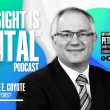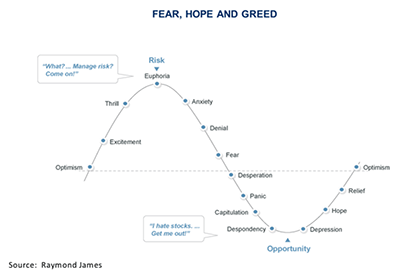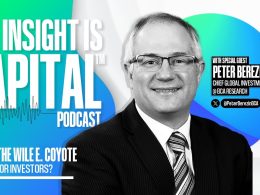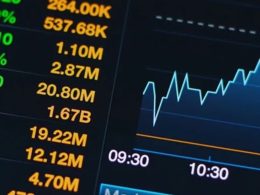“A Fresh Milestone”
by Jeffrey Saut, Chief Investment Strategist, Raymond James
April 1, 2013
“After a painful four-year slog from the financial crisis, the Standard & Poor’s 500-stock index pushed to an all-time high Thursday powered by rising investor faith in the economic recovery. While previous market rallies have been snuffed out by concerns about the European debt crisis or political uncertainty in the U.S., investors now are betting that the economic rebound and improving corporate earnings will carry the day.”
... Alexandra Scaggs; WSJ (3-29-13)
Last Thursday the S&P 500 (SPX/1569.19) notched a new all-time causing Ms. Scaggs to pen the aforementioned story in Friday’s Wall Street Journal. I was particularly interested in a sentence further down in the article that read, “The rally in stocks comes as investors warm up to stocks for the first time in years.” That prose sparked memories of an era gone by. The year was 1982 as the D-J Industrial Average (INDU/14578.54) approached the secular high of 985.21 made in 1968, as well as the nominal high of 1051.70 recorded in January 1973 (the peak of the nifty-fifty stocks). At the time the then gurus in this business were chiding me to sell. “Sell,” I replied, “Why sell?” Their response was, “Sell because for the past 17 years every time the Dow has approached the 1000 level you sold and then waited until the Dow retreated back into the 700 – 800 zone where you bought back into stocks again.” That mindset had been instilled into investors’ psyche not just by the 1965 to 1982 “range bound” experience, but by the entire nineteenth century. Consider this: the stock market’s price peak of 1929 was not exceeded until 1954 followed by a 12-year bull market. The next major high was made in 1966 with another subsequent two-year bull market that crested in 1968, which actually was the “secular peak” of the 1947 to 1968 bull market. The next major high was the “nominal peak” recorded in 1973. That price peak was exceeded in November 1982, leading to an 18-year secular bull market. The point is history suggests that a decisive break to new all-time highs is more likely a sign for more gains to come rather than a trigger event preceding a massive decline. The Wall Street Journal article also caused me to reflect on the various stages of a bull market.
The late Sir John Templeton often reminded us that “Bull markets are born on pessimism, grown on skepticism, mature on optimism and die on euphoria.” I have added a few more stages to Sir John’s mantra beginning with Stage 1 (Shock and Fear). Bear markets can end with either a bang or a whimper. During the President Kennedy “steel price” panic of 1962, the Dow made a panic V-shaped “bang” bottom. However, the November/December 1974 bottom was much more subtle with a rolling low in November follow by a very quiet lower-low in December and that was it; the bottom was complete. Still, both of those different bottoms were met with pessimism, concern and apprehension as investors denied equities altogether accompanied by the ubiquitous scream, “I will never buy stocks again!” Moreover, following the end of a bear market, and the initial “lift off” move of the beginning of a new bull market, there are tumultuous cries, “This is just a rally in an ongoing bear market,” which brings us to Stage 2 (Guarded Optimism).
E-v-e-r-y rally after a bear market bottom is encased with Sir John’s pessimism/skepticism as represented by comments like, “This is the last chance to get out.” Recall that was the media’s moments du jour after the March 2009 bottom as various pundits were trotted out to tell us how bad things were going to get. The foreboding example expressed was the 1929 affair where following the October “crash” there was a subsequent sharp rally only to give way to a decline that would erode 90% of the market’s value, ending in 1932 with the Dow at 41. Of course that one-off debacle was caused by huge blunders from the Federal Reserve and the Hoover administration. Yet even in the mid/late-1930s, as participants realized their worst fears would not materialize, a “guarded optimism” set in whereby stocks were bought because of their dividend yield as a conservative mood pervaded the equity markets. As things got better, that “guarded optimism” gave way to “enthusiasm,” or Stage 3.
In Stage 3 the economy actually starts to get better with the news backdrop going from bleak to better, which leads to greater enthusiasm. In turn, the economy strengthens even more, which drives the stock market ever higher creating more enthusiasm. This is the stage where earnings begin to grow nicely, price earning’s multiples start to expand, and confidence grows about a sustainable recovery. It is also where the wrong-footed prognosticators start trying to convince folks they really were not all that bearish on stocks at the bottom. At some point in this stage, the public starts participating in the stock market again and hints of speculation surface; eventually, Stage 3 builds into Stage 4 (Exuberance).
Stage 4: the transition between Stage 3 and Stage 4 is mainly about changing attitudes. As confidence builds, investors are engulfed by a feeling that nothing can go wrong. All stocks go “up,” all portfolio managers are geniuses, companies build inventories in anticipation that the “future is so bright I think I need shades,” etc. Stocks are bought because they are only trading at 50x next year’s earnings, which is less than half of the company’s anticipated growth rate. In this stage new Initial Public Offerings (IPOs) leap by 10, 20, or 30 points from their offering price, and you hear comments like, “The institutions will buy all of this IPO and there will not be any stock left for the public.” You also begin to hear stock “tips” from your barber, taxi driver, waiter, etc. on the hope that you, as a professional, will share your stock insights with them. Such giddiness eventually morphs into Stage 5 – the Surrealistic Phase.
Stage 5 is the very advanced phase of exuberance. New stock offerings are of questionable value, but still they trade “up” from their offering price. In the late 1960s, I called this phase the great “onics” market since any company whose name ended in “onics” soared following its IPO. In the late 1990s, the same phenomena occurred with anything related to the Internet (remember Razorfish?!). New era stocks of the 1990s traded at “eyeball views per minute” valuations changing hands at “merely” 200x earnings. There was a surreal feeling on the Street of Dreams at this stage with investment bankers having $100,000 dinners and the public was back into stocks in full-force. Stocks were no longer bought on anything resembling sound fundamentals. Newly minted Financial Advisors were making $25,000 a month, and we graybeards seem to be way too conservative having lived through Stage 6 in a past life.
Enters Stage 6 – Disillusionment – this is where the Surrealistic Phase ends with the bursting of the stock market bubble. The causa proxima can come from many venues (the oil shock of 1973, 9-11-01, the housing bubble burst, the Financial Fiasco of 2008, etc.), but the result is always the same. Manifestly, Stage 6 is typically a combination of many factors, yet the ending is the same in that the economic outlook is not nearly as positive as has been priced into stocks. At this point investors are “hoping” their stocks rally back to the prices at which they were bought so they can get even and get out. Of course, that doesn’t happen as investors hold on to losing positions, which eventually costs them dearly. Verily, Ben Graham’s mantra, at this stage of the cycle, should be “pinned” to the walls of all investors’ offices in that, “The essence of portfolio management is the management of RISKS, not the management of RETURNS. All good portfolio management begins (and ends) with this premise.” At this stage there is a helpless feeling as “stocks sag” and investors wrongly stay with those losing positions, which actually could be sold at minimal losses, but investors desperately cling to their losses when they should be jettisoned. I will not transgress into past prognostications, but conclude with what I said last week on my friend’s TV show (Susie Gharib’s Nightly Business Report – now on CNBC – at 5:30 p.m.), “I think there is a decent probability that we are into a new secular bull market that has a decade yet to run; and, nobody believes it.
The call for this week: If this is a new secular bull market, I think we are only in Stage 2 with many more years yet to come. While it is true at session 61 (today) this is the longest “buying stampede” EVER chronicled in my notes of over 50 years and we are due for some kind of pullback, I continue to think any pauses/pullbacks are for buying.













